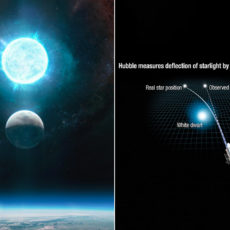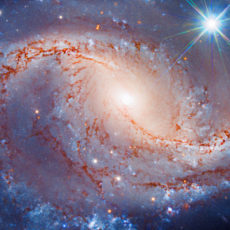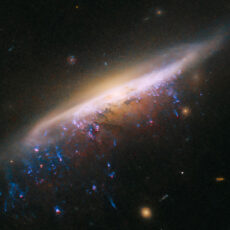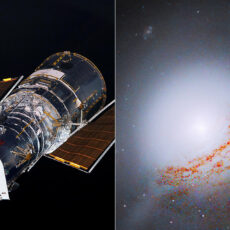
NGC 1511, a spiral galaxy located 50 million light-years away in the serene constellation Hydrus, will not remain calm. New Hubble Space Telescope photos reveal a disc practically edge-on, burning blue with millions of newborn stars. The birthplace of new suns is marked by red and pink hydrogen clouds. Dark ribbons of dust cross the face, obstructing light and heightening the already tense situation.
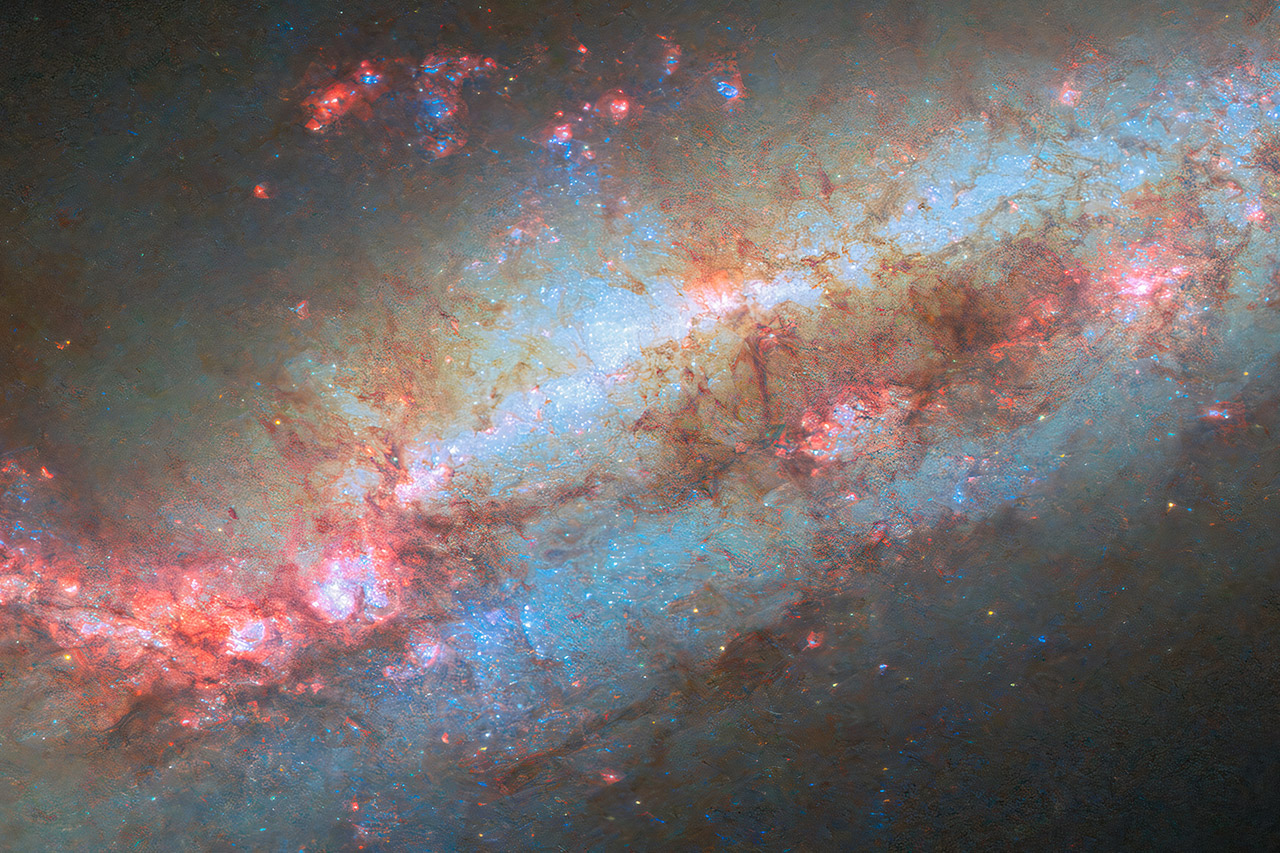
NGC 1511 never travels alone; it’s always with two smaller galaxies, NGC 1511A and NGC 1511B. The nearest neighbor, 1511B, is just outside Hubble’s frame but has left its mark on the main galaxy. A narrow bridge of hydrogen gas connects the two, evidence of a recent collision. The smaller galaxy is now stretched and torn, like a piece of cloth caught in a barbed wire fence. The other companion suffered a worse fate: NGC 1511 ripped it apart and scattered its remains long ago.
- Interactive model – Inspire kids to build a representation of the Earth, Sun and Moon in orbit with this LEGO Technic Planet Earth and Moon in Orbit...
- Educational space toy – Kids can turn the crank to see how the Earth and the Moon orbit around the Sun
- Includes months and moon phases – This solar system toy includes printed details, like the month and moon phases to help kids see how the Earth’s...
Collisions like these shake galaxies to their core. Gravity pulls gas into dense pockets which collapse into stars fast. That’s why NGC 1511’s spiral arms glow blue. Loops and plumes twist through the disc, remnants of previous interactions that warped the galaxy’s shape. Every disturbance feeds the cycle: gas turns into stars, stars burst, and new material flows back into the disc and the cycle starts again.
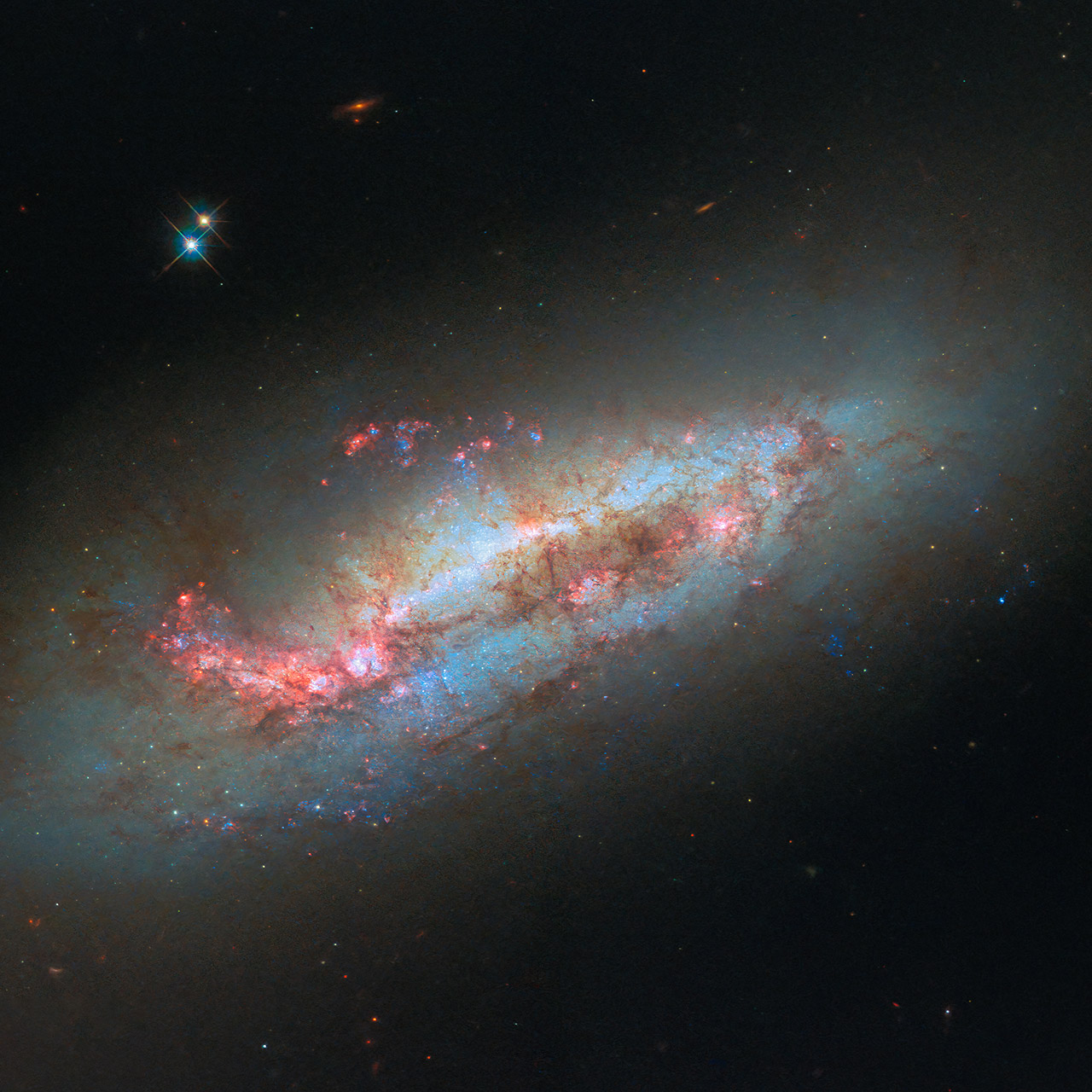
Hubble captured the image with six filters, from ultraviolet to near-infrared. Ultraviolet shows the hottest and youngest stars. A small filter separates the red hydrogen glow, showing where star formation is brightest. The combination is sharp enough to see individual clusters of young stars hidden beneath dusty clouds.
Astronomers will investigate those clusters in depth. Each one represents a glimpse of how stars originate under harsh conditions. By counting stars of various masses and ages, they can determine how matter travels from clouds to bright sources of light and then back to clouds after the stars die. NGC 1511 provides front-row seats to this process, which occurs faster here than in quieter galaxies.Galaxies are never clean, and NGC 1511 demonstrates that close neighbors cause disarray, which creates beauty. The same forces that destroy companions form new stars in the sky. In space, destruction and creation share the same address. Hubble’s new image depicts that moment: a spiral in the middle of a fight, still flinging punches while becoming brighter.



